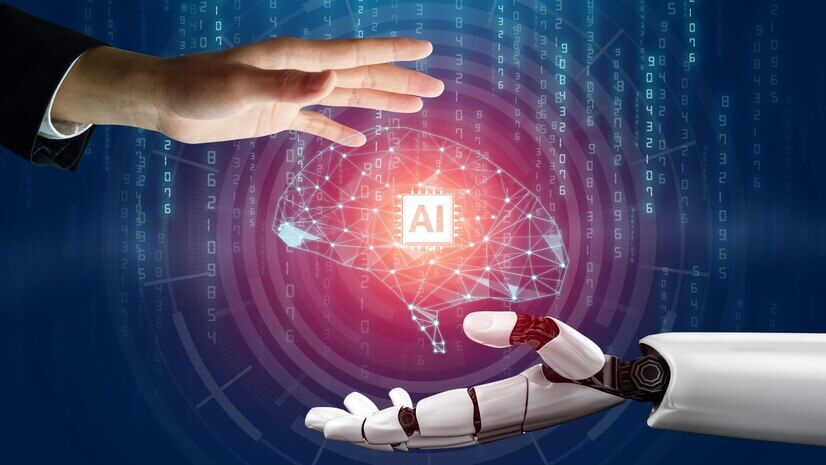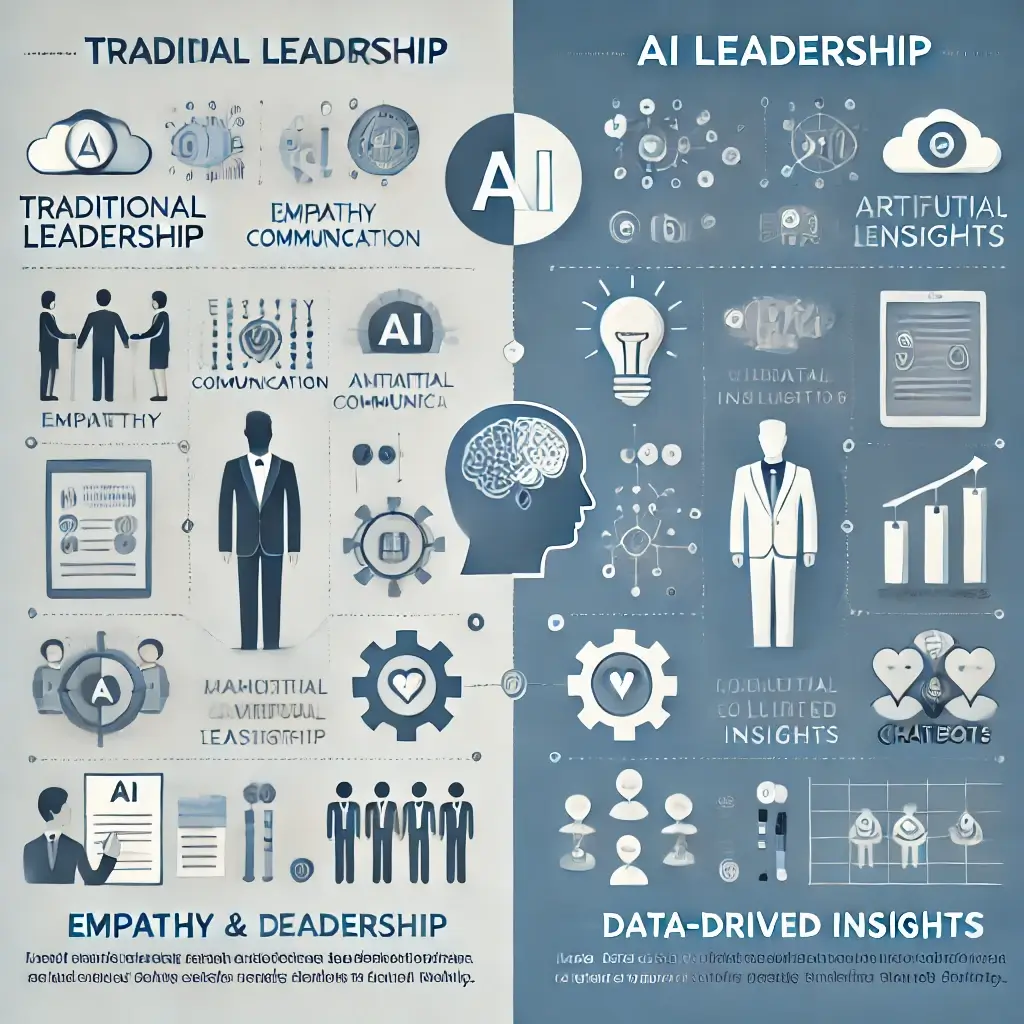AI Leadership: Intersection of AI and Leadership

- The integration of artificial intelligence (AI) into leadership is not just a trend.
- It is the cornerstone of modern organizational success.
- AI leadership represents the balance between:
- Leveraging AI’s precision
- Maintaining the human elements of:
- Empathy
- Creativity
- Ethical decision-making
- Maintaining the human elements of:
- This blog explores, in an era of technological evolution, how leaders can harness AI to revolutionize their approach while maximizing:
- Team efficiency
- Driving innovation
- Fostering trust
What is AI Leadership?

- In leadership processes, AI leadership is the practice of using artificial intelligence to:
- Support
- Enhance
- Streamline
- It allows leaders to make data-driven decisions.
- Enabling human teams to focus on:
- Creativity
- Innovation
Core Attributes of AI Leadership
Predictive Insights
- Use AI tools to forecast market trends, customer behaviors, and potential challenges.
Enhanced Productivity
- Automate repetitive tasks like:
- Performance tracking
- Freeing up time for strategic planning
Team Empowerment
- Tailor approaches to individual strengths using AI-driven employee analytics.
Ethical Integration
- Ensure AI systems are used:
- Responsibly
- Transparently
Why AI Leadership Matters for Modern Organizations

AI Leadership: Accelerating Decision-Making
- AI offers real-time analytics, eliminating the delays of manual data interpretation.
- For instance, tools like Google Cloud AI provide dashboards that summarize key metrics.
- Enabling leaders to act swiftly.
AI Leadership: Enhancing Collaboration
- Leaders can streamline communications with platforms such as:
- Slack GPT
- Microsoft Viva
- Ensuring hybrid teams remain productive and cohesive.
AI Leadership: Driving Innovation
- AI-driven tools foster creativity by analyzing patterns to reveal untapped opportunities.
- For example in:
- Marketing, AI identifies emerging customer segments.
- Operations, AI highlights inefficiencies in workflows.
AI Leadership: Mitigating Risk Through Predictive Analytics
- Empowering leaders to implement preventative strategies, AI systems can predict challenges in all domains of the business, such as:
- Supply chain disruptions
- Market trends
- Manufacturing
Emotional Intelligence (EI): A Cornerstone of AI Leadership
- As AI handles logical tasks, human leaders must amplify emotional intelligence to maintain team morale and trust.
Key Emotional Intelligence Traits for AI Leaders
Empathy
- Connect with team members to address concerns about AI adoption.
Adaptability
- Adjust strategies dynamically in response to AI insights.
Communication
- Present complex AI findings clearly, ensuring stakeholders understand their implications.
Practical Tips
- Use open-ended meetings to discuss AI’s role and address team concerns.
- Balance data-driven strategies with the emotional nuances of leadership.
Adapting to AI Leadership: Actionable Strategies
Build AI Literacy
- Leaders must familiarize themselves with AI tools and understand their applications.
- Popular courses on Coursera or edX provide certifications on AI integration for leadership roles.
Master the Art of Data Storytelling
- Data alone can overwhelm teams.
- Transform insights into actionable narratives that connect emotionally with your team.
Example:
Raw data
- “AI suggests a 25% productivity increase.”
Storytelling
- “AI insights show that by implementing X, we can achieve a 25% productivity boost.
- Allowing us to focus on innovative projects.”
Ethical AI Practices
- Foster transparency by sharing how AI systems work and how they benefit both teams and customers.
- Address concerns about fairness and algorithmic bias directly.
Promote Human-Centered Leadership
- Encourage a culture where AI enhances—not replaces—human roles.
- Pair AI analytics with brainstorming sessions to:
- Balance data insights
- Increase creativity
Real-World AI Leadership in Action
Sundar Pichai (Google)
- Pichai emphasizes AI-driven solutions such as:
- Google Bard
- TensorFlow
- Advocating for responsible AI development.
Satya Nadella (Microsoft)
- Under Nadella, Microsoft integrates AI into platforms like Azure AI to:
- Streamline processes
- Empower teams globally
Mary Barra (General Motors)
- Barra uses AI for predictive maintenance in manufacturing:
- Ensuring cost efficiency
- Reducing production downtime
FAQs About AI Leadership
What is AI leadership?
- AI leadership integrates AI tools into decision-making and management to enhance:
- Productivity
- Innovation
- Team dynamics
Can AI replace leaders?
- No, AI complements human leadership by automating repetitive tasks and providing insights.
- Empathy, creativity, and strategic judgment remain human domains.
What skills are essential for AI leaders?
- AI literacy, emotional intelligence, adaptability, and ethical decision-making are key skills.
How can leaders ensure ethical AI use?
- In AI system development, leaders can ensure ethical AI use by:
- Fostering transparencyAddressing biases in Algorithms
- Involving diverse stakeholders
Final Thought: Embrace the Future of Leadership
- The integration of AI in leadership is:
- No longer a choice
- A necessity of today
- It’s crucial in this AI-driven world that leaders prioritize:
- AI literacy
- Emotional intelligence
- Ethical decision-making
- By doing so, we can ensure that AI leadership:
- Enhances human capabilities
- Avoids replacing them
- Join our AI-Driven Leadership Community.
- Connect with forward-thinking leaders.
https://hbr.org/2024/06/how-ai-can-make-make-us-better-leaders







